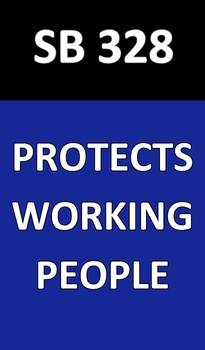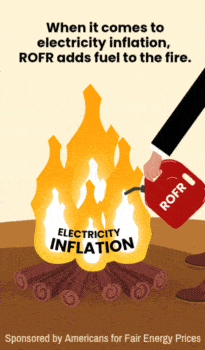* Gov. Pritzker said today that several IDPH regions are becoming more worrisome this week. The Metro East’s Region 4 is back up above an 8 percent positivity rate as of today, for instance. Three days of sustained 8 percent positivity triggers mediation measures, and Region 4 only recently emerged from a long ordeal with those regulations.
Region 9, which encompasses Lake and McHenry counties, has seen its average positivity rate hover in the upper 7’s for the past few days and is now at 7.7 percent. Region 8 is now at 9.4 percent, with available hospital beds down to 25 percent. A 20 percent surge capability for hospital beds triggers mitigation.
Region 1, in northern and northwestern Illinois, cannot get its act together and is at 11.7 percent today. Region 7, which is Will and Kankakee counties is at 9.2 percent. Suburban Cook is at 7.3 with its hospital bed availability down to 23 percent. And Chicago is at 7 and hospital bed availability is down to 22 percent, just two points above the danger zone.
It’s just bad pretty much everywhere. Click here to see for yourself.
* IDPH Director Dr. Ngozi Ezike cried for several minutes at the podium today as she literally begged Illinoisans to take this virus seriously. “Let’s please think beyond ourselves,” she said. “For those seven, eight days that you may be shedding the virus, you’re unknowingly, unwittingly infecting people in your path.”
“The people of Illinois are her patients,” Gov. Pritzker explained after Dr. Ezike finished speaking. He also said the director has been subjected to “verbal attacks” and that protesters have shown up at her home.
…Adding… Good advice…
“I’m desperate to find a message that will work,” Ezike said. “The virus has caused this and instead of pitting one group against another, we need to get that and fight against the virus. We have a mask and we’re asking people to use that and I don’t know what else to say.”
…Adding… Got busy and forgot to post this…
The Illinois Department of Public Health (IDPH) today reported 51 counties in Illinois are considered to be at a warning level for novel coronavirus disease (COVID-19). A county enters a warning level when two or more COVID-19 risk indicators that measure the amount of COVID-19 increase.
Fifty-one counties are currently reported at a warning level – Adams, Bond, Boone, Carroll, Cass, Christian, Clay, Clinton, Crawford, DeKalb, Douglas, Edwards, Fayette, Ford, Franklin, Gallatin, Greene, Hamilton, Henderson, Jersey, Jo Daviess, Johnson, Kane, Kendall, Knox, LaSalle, Lee, Macon, Macoupin, McDonough, McHenry, Mercer, Morgan, Moultrie, Ogle, Perry, Pike, Pulaski, Rock Island, Saline, Shelby, Stephenson, Union, Vermilion, Wabash, Warren, Wayne, Whiteside, Will, Williamson, and Winnebago.
Although the reasons for counties reaching a warning level varies, some of the common factors for an increase in cases and outbreaks are associated with gatherings in people’s homes, weddings and funerals, bars and clubs, university and college parties as well as college sports teams, family gatherings, long-term care facilities, correctional centers, schools, and cases among the community at large, especially people in their 20s.
Public health officials are observing businesses blatantly disregarding mitigation measures, people not social distancing, gathering in large groups, and not using face coverings. Mayors, local law enforcement, state’s attorneys, and other community leaders can be influential in ensuring citizens and businesses follow best practices.
Several counties are taking swift action to help slow spread of the virus, including increasing testing opportunities, stressing the importance of testing to providers, hiring additional contact tracers, working with schools, and meeting with local leaders.
IDPH uses numerous indicators when determining if a county is experiencing stable COVID-19 activity, or if there are warning signs of increased COVID-19 risk in the county. A county is considered at the warning level when at least two of the following metrics triggers a warning.
New cases per 100,000 people. If there are more than 50 new cases per 100,000 people in the county, this triggers a warning.
Number of deaths. This metric indicates a warning when the weekly number of deaths increases more than 20% for two consecutive weeks.
Weekly test positivity. This metric indicates a warning when the 7-day test positivity rate rises above 8%.
ICU availability. If there are fewer than 20% of intensive care units available in the region, this triggers a warning.
Weekly emergency department visits. This metric indicates a warning when the weekly percent of COVID-19-like-illness emergency department visits increase by more than 20% for two consecutive weeks.
Weekly hospital admissions. A warning is triggered when the weekly number of hospital admissions for COVID-19-like-illness increases by more than 20% for two consecutive weeks.
Tests performed. This metric is used to provide context and indicate if more testing is needed in the county.
Clusters. This metric looks at the percent of COVID-19 cases associated with clusters or outbreaks and is used to understand large increase in cases.
These metrics are intended to be used for local level awareness to help local leaders, businesses, local health departments, and the public make informed decisions about personal and family gatherings, as well as what activities they choose to do. The metrics are updated weekly, from the Sunday-Saturday of the prior week.
A map and information of each county’s status can be found on the IDPH website at https://www.dph.illinois.gov/countymetrics.















